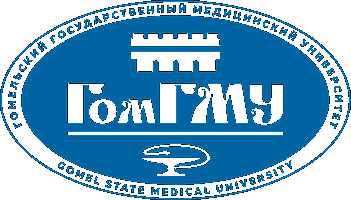Показать сокращенную информацию
Occlusion of the vein adjacent to colorectal cancer liver metastasis as a way to increase the radicality of percutaneous radiofrequency thermal ablation
| dc.contributor.author | Murashko, K. L. | |
| dc.contributor.author | Yurkovskiy, A. М. | |
| dc.date.accessioned | 2021-10-04T10:55:17Z | |
| dc.date.available | 2021-10-04T10:55:17Z | |
| dc.date.issued | 2021 | |
| dc.identifier.citation | Murashko, K. L. Occlusion of the vein adjacent to colorectal cancer liver metastasis as a way to increase the radicality of percutaneous radiofrequency thermal ablation / K. L. Murashko, A. М. Yurkovskiy // Health and Ecology Issues. – 2021. – Vol. 18, № 3. – P. 57-63. | ru_RU |
| dc.identifier.uri | http://elib.gsmu.by/handle/GomSMU/9261 | |
| dc.description.abstract | Objective. To evaluate the effectiveness of preoperative coagulation of the vein adjacent to a tumor nodule in sonographically-guided percutaneous radiofrequency thermal ablation of perivascular liver metastases of colorectal cancer. Materials and methods. To address the issue, we compared the results of sonographically-guided percutaneous radiofrequency thermal ablation of perivascular liver metastases of colorectal cancer in 27 patients (aged 60.5 (58; 68) years) without prior coagulation of the adjacent vein (control group) and 26 patients (62.0 (60; 74)) with prior coagulation of the adjacent vein (experimental group). Results. Lower incidence of residual tumor in the ablation area in the patients with prior coagulation of the adjacent vein (14.3 % vs. 29 % of the patients in the control group) and a higher relapse-free survival of such patients (65.2 % vs. 53.6 % and 55.6 % vs. 33.3 %) were reported as compared to the group without prior coagulation of the adjacent vein (after 6 and 12 months, respectively). Conclusion. Preoperative coagulation of the vein adjacent to colorectal cancer liver metastasis allows reducing the effect of heat removal from the RFA zone, thereby contributing to higher radicality of the treatment and resulting both in a lower incidence of residual tumor in the ablation zone and a higher relapse-free survivalof patients, notably without significant concomitant changes in the affected part of the liver (segment atrophy). | ru_RU |
| dc.description.abstract | Цель исследования. Оценить эффективность предварительной коагуляции вены, прилежащей к опухолевому узлу, при сонографически контролируемой чрескожной радиочастотной термоаблации периваскулярных метастазов колоректального рака в печени. Материалы и методы. Для решения поставленной задачи проведено сопоставление результатов сонографически контролируемой чрескожной радиочастотной термоаблации периваскулярных метастазов колоректального рака в печени 27 пациентов (возраст — 60,5 (58; 68) года) без предварительной коагуляции прилежащей вены (группа контроля) и 26 пациентов (62,0 (60; 74])) с предварительной коагуляцией прилежащей вены (опытная группа). Результаты. Выявлена меньшая инцидентность остаточной опухоли в зоне аблации у пациентов с предварительной коагуляцией прилежащей вены (14,3 % против 29,0 % у пациентов группы контроля) и большая безрецидивная выживаемость пациентов (65,2 % против 53,6 % и 55,6 % против 33,3 %) в сравнении с группой без предварительной коагуляции прилежащей вены (через 6 и 12 месяцев соответственно). Заключение. Предварительная коагуляция вены, прилежащей к метастазу колоректального рака в печени, позволяет уменьшить эффект теплоотведения из зоны РЧА, тем самым обеспечивая большую радикальность воздействия и, соответственно, меньшую инцидентность остаточной опухоли в зоне аблации, а также большую безрецидивную выживаемость пациентов, причем без существенных сопутствующих изменений печени (атрофии сегмента) в зоне воздействия. | |
| dc.language.iso | en | ru_RU |
| dc.publisher | ГомГМУ | ru_RU |
| dc.subject | radiofrequency thermoablation | ru_RU |
| dc.subject | liver metastases | ru_RU |
| dc.subject | coagulation | ru_RU |
| dc.subject | local thermal exposure | ru_RU |
| dc.subject | ultrasound | ru_RU |
| dc.subject | computed tomography | ru_RU |
| dc.subject | радиочастотная термоаблация | |
| dc.subject | метастазы печени | |
| dc.subject | коагуляция | |
| dc.subject | локальное тепловое воздействие | |
| dc.subject | ультразвуковое исследование | |
| dc.subject | компьютерная томография | |
| dc.title | Occlusion of the vein adjacent to colorectal cancer liver metastasis as a way to increase the radicality of percutaneous radiofrequency thermal ablation | ru_RU |
| dc.type | Article | ru_RU |
| dc.identifier.doi | https://doi.org/10.51523/2708-6011.2021-18-3-7 |
Файлы данного ресурса
Данный элемент включен в следующие коллекции
-
Том 18, № 3 [24]
